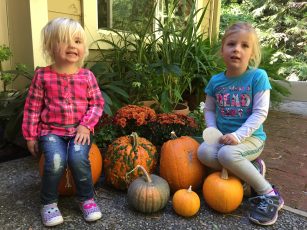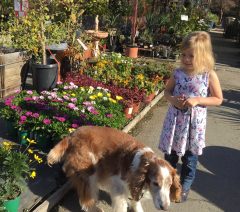I?m envious of those who garden in lots of sun. Well maybe not so much on a hot July day but mostly I wish I could grow more edibles in the opening of my tall redwood forest. My neighbor gives me volunteer Sun Gold cherry tomatoes each spring and some years all the stars align and I enjoy these sweet morsels, picking them mostly as I putter in the garden. They rarely get inside on a salad, but boy, are they delicious.
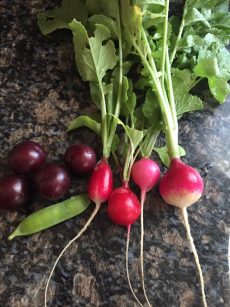
I?m often asked for suggestions for gardening in the shade. By taking advantage of a few sunny spots and carefully choosing the vegetables and herbs you plant you can harvest food from your own garden. Without much sun, plants photosynthesize less and produce less sugar. On the other hand, shade does offer some benefits. Gardens in the shade don’t have to be watered as often and weeds don’t grow as quickly.
There are three types of shade. A partially shady location is one that receives 2-6 hours of sun, either in the morning or in the afternoon. It can also refer to a full day of dappled sunlight. Most edibles that prefer full sun will grow in partial shade, especially if they receiver their hours of fullest sunlight in the morning. A lightly shaded garden receives an intermediate level of shade. While it may receive only an hour or two of direct sun during the day it is bright enough the rest of the time to allow a variety of edibles-especially leafy greens to grow. Full shade is found under mature trees that have dense, spreading foliage. Unpruned oaks and maples cast this kind of shade in summer. Heavy shade under mature evergreens is often dry. A fully shaded location like this is fine for woodland plants but in not a great place for edibles.
Whatever level of shade you have in your yard, make the most of the situation. First, if you have the choice, opt for afternoon shade. Shade in the afternoon is more hospitable in the summer when the sun is fierce. The severe temperature swings created by a combination of shade in the morning and blazing sun all afternoon are difficult for most plants to withstand. Gardens facing east will enjoy bright sun all morning and shade in the early afternoon.
If you garden under deciduous trees you can give plants a head start by starting the seeds indoors or direct seeding early before the trees leaf out. All trees, however, bring roots as well as shade to the garden and tree roots will compete with garden plants for water and nutrients. Any plant grown where there are tree roots will need extra water and fertilizer to make up for the competition. If you can’t get the garden out of the dense shade of trees, at least get it past the tree dripline where most of the roots are located. If that’s not possible, it might be better to plant in containers beneath the trees to prevent tree roots from invading the root zone of your vegetables.
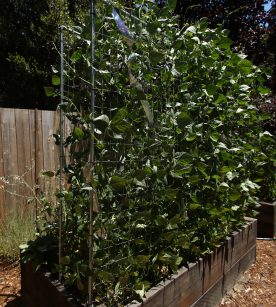
Shade tolerant vegetables for your brightest spots-the partial shade areas- include beans, peas, potatoes, pumpkin, summer squash and early maturing tomatoes like Early Girl, Stupice, San Francisco Fog, Isis Candy as well as other cherry tomatoes. Corn and peppers will be lankier and bear later and only modesty in partial shade.
Root crops and leafy plants can tolerate more shade than fruiting crops. Beets, carrots, celery and turnip will grow quite happily in partial shade. So will shallots and bunching onions, cilantro, garlic, chives, kale, leeks, parsley and thyme. Leafy plants can tolerate partial to light shade because their leaves grow larger to absorb the sunlight the plants need. In very light shade areas concentrate on leafy green like Swiss chard, lettuce, spinach, radishes and tarragon.
Shade can be decidedly helpful to some crops. Leafy greens will be more tender and succulent, without the bitterness they tend to acquire when conditions are too hot. A combination of a bit of afternoon shade and an abundance of moisture will help cut-and-come-again crops like broccoli, lettuce, cabbage and celery stay in good condition longer in hot weather.
Whatever plants you grow in your shady garden, be sure not to crowd them. Plants tend to sprawl there and if placed too close together they will compete for available light. Place your vegetables plants wherever they will get the most light even if it means putting different crops in separate places. A small harvest is still better than no harvest at all.
Those of us who live under the trees know a shady garden is a pleasant place to spend time working on a hot summer day. Be thankful for what you do have.

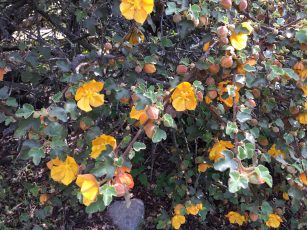
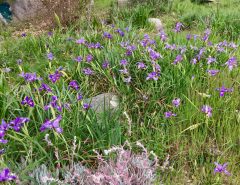
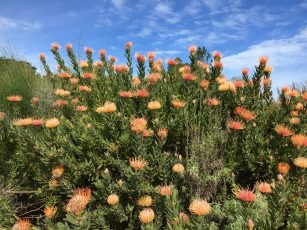
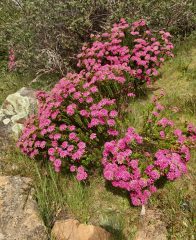

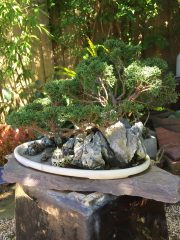
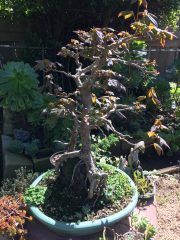
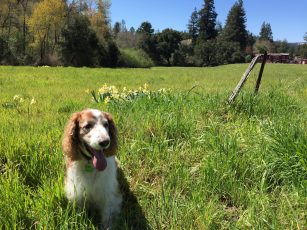
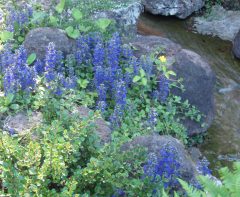

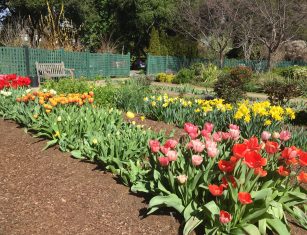
 manage it in its most vulnerable stages. They can also be used to time the planting of vegetables, apply fertilizer, prune and so on.
manage it in its most vulnerable stages. They can also be used to time the planting of vegetables, apply fertilizer, prune and so on. 
